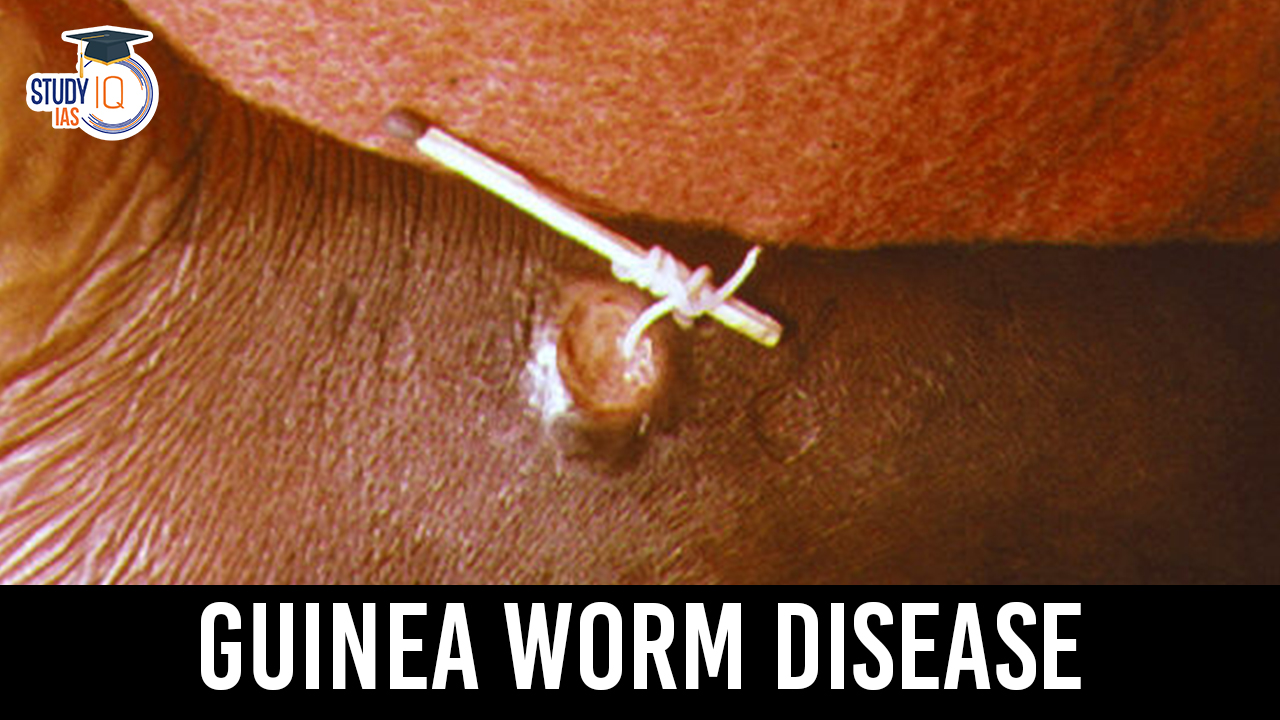Table of Contents
Guinea worm disease (GWD), scientifically known as Dracunculiasis, stands as a testament to the persistence of neglected tropical diseases (NTDs) in the modern world. Despite advances in medicine and public health, this parasitic infection continues to afflict vulnerable populations, particularly those in rural, deprived, and isolated communities reliant on stagnant water sources for their daily needs.
The global fight against Guinea worm disease stands on the cusp of a remarkable public health victory. From over 3.5 million cases recorded in the 1980s, the disease has witnessed a dramatic decline. According to the World Health Organization’s (WHO) weekly epidemiological report, reported cases dwindled to 14 in 2021, further decreasing to 13 in 2022, and reaching a mere six cases in 2023. This extraordinary progress highlights the efficacy of concerted eradication efforts and offers hope for the eventual elimination of Guinea worm disease worldwide.
Guinea Worm Disease
GWD is caused by the parasitic nematode Dracunculus medinensis, commonly known as the Guinea worm. The life cycle of this parasite intricately involves humans and water fleas (Cyclops spp), with humans serving as the definitive host. The disease spreads through the consumption of water contaminated with Guinea worm larvae, typically found in open, stagnant water bodies such as ponds and shallow wells.
| Aspect | Description |
| Name | Guinea Worm Disease (GWD), also known as Dracunculiasis |
| Causative Agent | Dracunculus medinensis (Guinea Worm) |
| Transmission | Consumption of water containing Guinea worm larvae |
| Affected Population | People in rural, deprived, and isolated communities |
| Transmission Source | Open, stagnant water sources (e.g., ponds, shallow wells) |
| Symptoms |
|
We’re now on WhatsApp. Click to Join
Guinea Worm Disease Symptoms
Symptoms of Guinea worm disease can vary in severity but often include distinctive manifestations:
- Emergence of Worms: A hallmark sign of GWD is the emergence of Guinea worms, either as intact individuals or as fragments, from painful blisters on the skin. These blisters often appear on the lower extremities and can cause significant discomfort to the affected individual.
- Skin Lesions: Patients may develop a red, itchy rash resembling the shape of a worm on their skin, indicative of the presence of the parasite.
- Gastrointestinal Symptoms: Some individuals may experience gastrointestinal symptoms such as nausea, diarrhoea, or abdominal pain, persisting for more than two weeks.
- Unexplained Weight Loss: Chronic infection with Guinea worms can lead to unexplained weight loss, further compromising the health and well-being of affected individuals.
Complications and Long-term Effects of Guinea Worm
While GWD is rarely fatal, it can result in debilitating complications, particularly in cases of prolonged infection:
- Joint Infections: Infections involving the joints can lead to permanent damage, causing joints to lock and deform, rendering individuals non-functional for weeks or even months.
- Worm Fragmentation: If a Guinea worm breaks during attempted removal, the remaining portion can deteriorate within the body, triggering intense inflammation and cellulitis.
Guinea Worm Disease In India
In 1983-4, the Indian government began a national program to eradicate guinea worms. In 2000, the World Health Organization certified India as guinea worm disease-free. Before eradication, GWD was a significant public health issue in many Indian states. In the mid-1980s, the number of human cases annually was 3.5 million, but in 2021, it fell to 15.
Guinea Worm Disease Impact on Communities
The burden of Guinea worm disease extends beyond individual suffering, profoundly impacting the social and economic fabric of affected communities:
- Impaired Productivity: Individuals incapacitated by GWD are unable to participate fully in productive activities, exacerbating poverty and hindering community development efforts.
- Healthcare Burden: The management of GWD places strain on already fragile healthcare systems in endemic regions, diverting resources away from other essential health interventions.
Prevention of Guinea Worm Disease
Prevention remains the cornerstone of Guinea worm disease control, with concerted efforts focused on:
- Safe Drinking Water: Promoting access to clean, safe drinking water through improved water sources and filtration methods can significantly reduce the risk of GWD transmission.
- Health Education: Community-based health education programs play a crucial role in raising awareness about GWD transmission and prevention strategies, empowering individuals to protect themselves and their families.
- Surveillance and Case Management: Timely detection and management of Guinea worm cases are essential for preventing further transmission and mitigating the impact of the disease on affected individuals.
Effort for Global Eradication of Guinea Worm Disease
To achieve global eradication of Guinea Worm Disease, a concerted effort involving various stakeholders and strategies is imperative. Here’s what needs to be done:
- Intensify Eradication Programs: Building upon existing initiatives like the National Guinea Worm Eradication Programme (GWEP), there must be a renewed commitment to intensify efforts aimed at eliminating the disease. This includes allocating sufficient resources, strengthening infrastructure, and implementing innovative approaches to reach endemic communities.
- Collaborative Approach: Collaboration among government agencies, local health workers, and international partners is essential for coordinating resources, sharing expertise, and implementing coordinated strategies. By leveraging the strengths of each stakeholder, we can maximize the impact of eradication efforts and accelerate progress towards the shared goal.
- Community Empowerment: Empowering local communities with knowledge and tools is crucial for sustainable disease control. This includes educating community members about the importance of filtering water before use, recognizing symptoms of Guinea Worm Disease, and promptly reporting cases to health authorities for immediate response. Additionally, promoting community ownership of eradication efforts fosters active participation and enhances the likelihood of success.
- Enhanced Surveillance: Strengthening surveillance systems is paramount for detecting all infected individuals and containing transmission. This involves implementing robust surveillance mechanisms to promptly identify and respond to cases, as well as conducting comprehensive epidemiological investigations to track disease trends and inform targeted interventions.
- Health Education: Providing health education to community members and animal owners is essential for raising awareness about Guinea Worm Disease transmission, prevention, and treatment. By disseminating accurate information through culturally sensitive channels, we can empower individuals to take proactive measures to protect themselves and their communities from infection.
- Vector Control Interventions: Implementing vigorous and comprehensive vector control interventions is critical for reducing the transmission of Guinea Worm Disease. This may involve targeted measures such as larviciding, habitat modification, and environmental management to control the population of intermediate hosts and interrupt the parasite’s life cycle.
Guinea Worm Disease UPSC
Guinea worm disease persists as a poignant reminder of the health disparities faced by marginalized communities worldwide. Addressing the root causes of this neglected tropical disease demands a multifaceted approach encompassing public health interventions, community engagement, and sustainable development initiatives. By prioritizing the eradication of Guinea worm disease, we can strive towards a future where no individual is burdened by this preventable affliction, and communities can thrive free from the specter of neglected tropical diseases.


 Asia Cup Winners List (1984–2025): Ind...
Asia Cup Winners List (1984–2025): Ind...
 Actor Mohanlal to Be Presented Dadasaheb...
Actor Mohanlal to Be Presented Dadasaheb...
 Advanced Air Defence Radars: Types, Comp...
Advanced Air Defence Radars: Types, Comp...




















